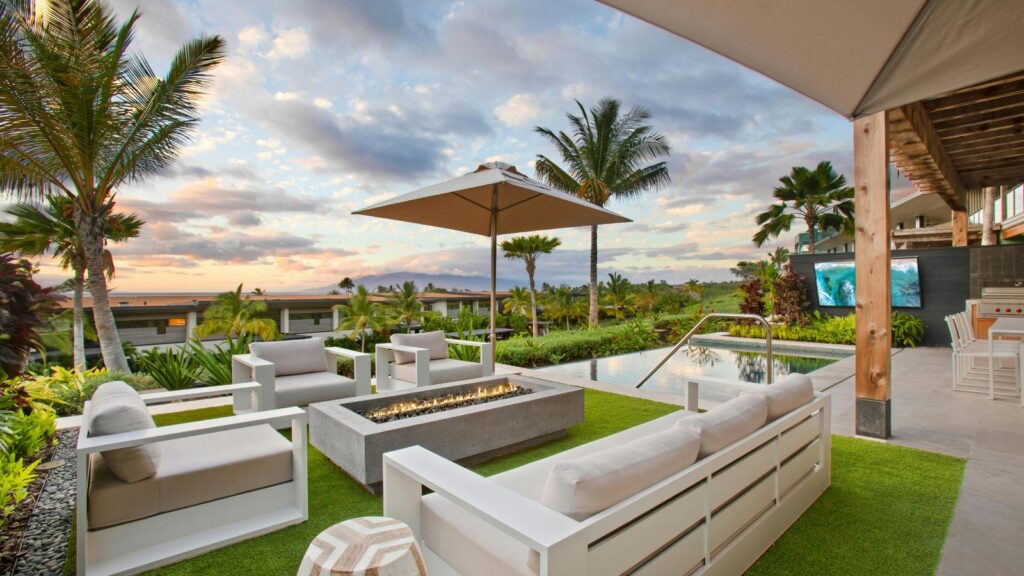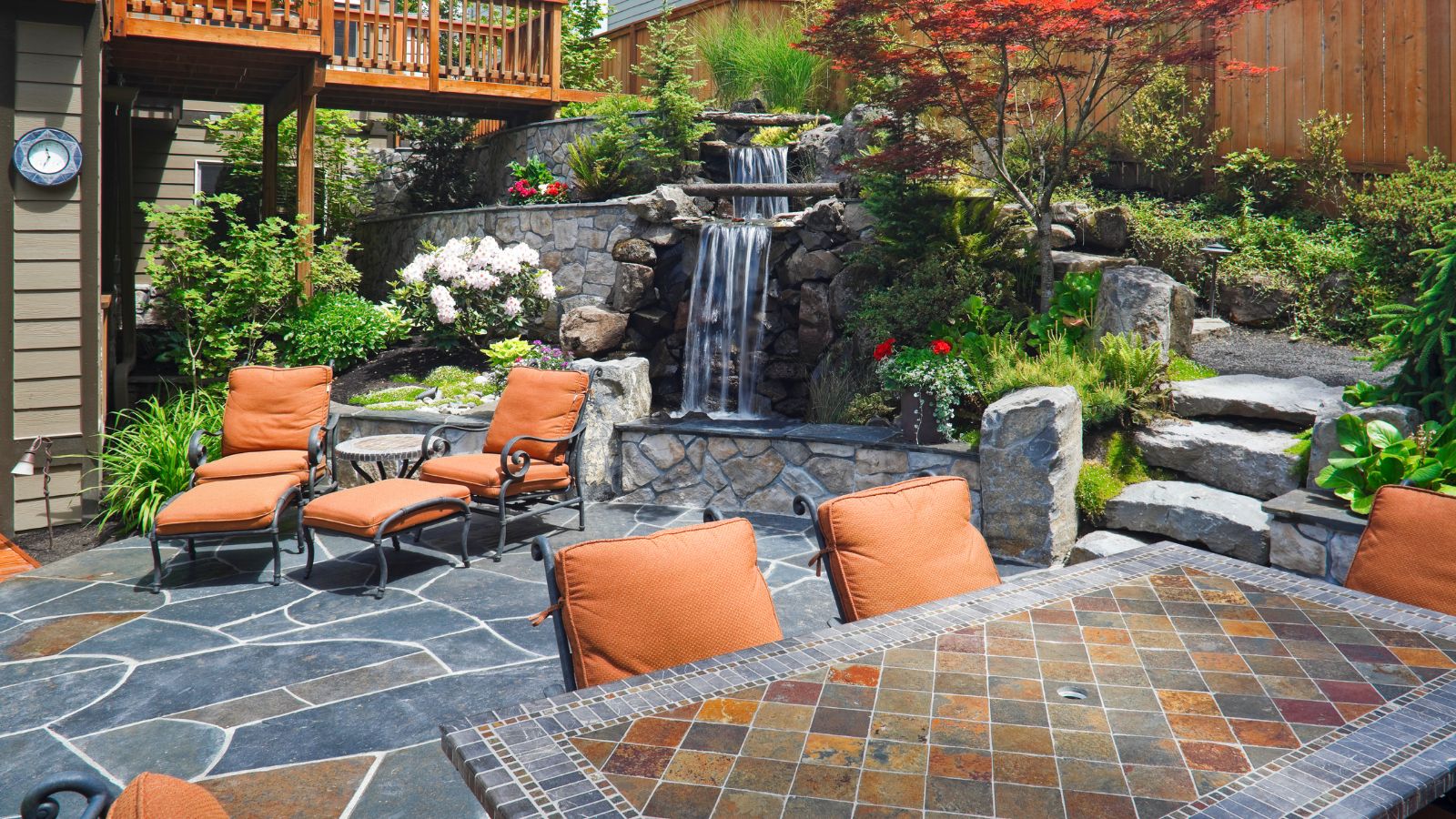In the beautiful city of Portland, where lush greenery meets urban charm, outdoor living doesn’t have to be limited to those perfect summer days. With thoughtful design and strategic planning, your outdoor space can become a year-round retreat that adapts to Portland’s changing seasons. Creating a four-season outdoor living area allows you to maximize your property investment and enjoy the Pacific Northwest’s natural beauty throughout the year.
Lewis Landscape Services has seen a dramatic increase in Portland homeowners seeking to transform their backyards into functional spaces that can be enjoyed regardless of the weather. The trend makes perfect sense—why limit yourself to using your outdoor space for only a few months when, with the right design elements, you could be enjoying it all year long? Creating a space that transitions seamlessly through Oregon’s distinct seasons requires expertise in both design and local climate considerations.
Portland’s unique climate presents both challenges and opportunities for outdoor living. With cool, rainy winters and warm, dry summers, your outdoor space needs versatility to remain comfortable throughout these seasonal shifts. According to climate data, Portland winters typically feature temperatures in the 40s with significant rainfall, while summers bring temperatures in the 70s-80s with minimal precipitation from mid-June through September. Spring and fall offer variable conditions that can change quickly. Understanding these patterns is essential when planning a space that will serve you year-round.
Essential Elements for Year-Round Outdoor Living
1. Shelter and Coverage
The foundation of any four-season outdoor space in Portland starts with appropriate shelter. Covered structures such as patios covers, pergolas, and outdoor pavilions provide protection from rain without completely disconnecting you from the outdoors. Modern options include retractable or louvered covers that can adapt to changing weather conditions, allowing you to open your space to clear skies or quickly provide shelter when rain clouds appear and timber roof structures with options like skylights to offer automatic protection and beauty in any weather.
All-season patio enclosures have become increasingly popular, offering the perfect middle ground between indoor comfort and outdoor connection. These structures can feature sliding glass doors that maintain views while protecting against wind and rain. Depending on your needs, they can be designed as fully enclosed sunrooms or as spaces with retractable elements that open fully during pleasant weather.
As one Portland Landscape Designer explained to me recently, “The secret to creating successful year-round spaces in our climate is designing with flexibility in mind. Elements that can adapt to our weather give homeowners the ability to enjoy their outdoor spaces regardless of what Mother Nature brings.”
2. Temperature Control for Comfort
Addressing temperature fluctuations is crucial for maintaining comfort throughout Portland’s seasons. For cooler months, incorporating a fire feature serves both practical and aesthetic purposes. Options range from built-in fireplaces that create a dramatic focal point to fire pits that encourage gathering and conversation. Modern outdoor heaters can also be integrated discreetly into your design, providing targeted warmth without disrupting the visual appeal of your space.
For summer comfort, strategic placement of shade structures helps manage heat, while outdoor ceiling fans improve air circulation. The key is creating various temperature controls that allow you to find comfort regardless of the season.
3. Thoughtful Lighting Design
Portland’s shorter winter days mean effective lighting is essential for year-round enjoyment. A comprehensive lighting plan should include:
- Path lighting for safety and navigation
- Ambient lighting for general illumination
- Accent lighting to highlight landscaping features
- Task lighting for cooking or reading areas
LED technology offers energy-efficient options that withstand our Pacific Northwest weather while providing customizable lighting effects. Consider programmable systems that adjust to seasonal needs, automatically providing earlier illumination during winter months.
Seasonal Design Considerations for Portland
Winter Enjoyment
Winter in Portland brings rain rather than heavy snow, so proper drainage is essential. Drainage systems and strategically sloped surfaces prevent water accumulation. Covered seating areas with integrated heating elements create inviting winter retreats, especially when accompanied by weather-resistant cushions and throw blankets in waterproof storage.
Evergreen plantings maintain visual interest during winter months, while winter-blooming plants like Hellebores, Pieris and Camellia and shrubs with winter foliage color such as Nandina and New Zealand Flax that add unexpected color. Consider incorporating a hot tub or spa feature as a luxurious way to enjoy your outdoor space even on the coldest days.
Spring Transitions
Spring brings variable conditions but also the emergence of Portland’s famous blooms. Design your space with raised garden beds or container gardens that put spring flowers at eye level from seating areas. Retractable awnings provide flexibility during spring’s unpredictable weather patterns, offering protection during rain showers while opening to capture precious sunny moments.
Summer Optimization
Portland’s summers are dry and increasingly warm, making shade and cooling features essential. Mature trees provide natural shade, while pergolas with adjustable louvered roofs offer customizable protection. Outdoor kitchens extend living space and prevent heating up your home during cooking, while water features provide both visual appeal and evaporative cooling effects.
Fall Preparations
As temperatures drop and rainfall increases, your outdoor space should transition smoothly into cozy mode. Integrated drainage systems prevent leaf accumulation, while covered storage areas protect furniture and accessories. Fire features become central gathering points, extending evening enjoyment as daylight hours decrease.
Materials That Perform Year-Round in Portland
Material selection significantly impacts the durability of your outdoor living space. Portland’s moisture requires careful consideration:
- Composite decking resists the warping and rot that can affect wood in our humid climate
- Powder-coated aluminum furniture withstands moisture without rusting
- Marine-grade fabrics resist fading from summer sun and mildew from winter rain
- Well built custom paver systems maintain their beauty and remain solid despite freeze-thaw cycles
- Walls made of natural stone or concrete block offer natural resistance to our climate’s challenges
Maintenance Considerations
Even well-designed spaces require maintenance to perform at their best year-round. Incorporate features that minimize upkeep, such as gutters on covered structures to direct rainwater, quick-drying furniture, and low-maintenance plants that require less pruning and less attention. Consider designing storage areas for seasonal items, allowing you to quickly adapt your space as seasons change.
Conclusion
Creating a four-season outdoor living space in Portland isn’t about fighting our climate—it’s about embracing it with intelligent design. By incorporating flexible elements that adapt to changing seasons, you can extend your enjoyment of the outdoors far beyond the traditional summer months. The investment in a thoughtfully designed outdoor space pays dividends in the form of expanded living area and increased enjoyment of your property throughout the year.
Whether you’re planning a complete backyard transformation or looking to enhance an existing space with year-round functionality, now is the perfect time to start thinking about how your outdoor areas could better serve you through all four seasons of Portland’s beautiful, ever-changing climate.




More Stories
4 Reasons You Might Need a Fencing Company
The Right Plumbing Fixtures for Your Home
Signs You Need Professional Mold Removal in Toronto Now